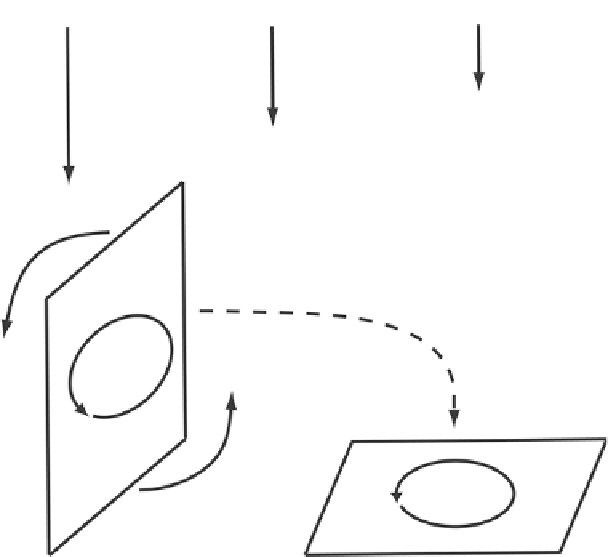Geoscience Reference
In-Depth Information
Figure 4.54. Idealized illustration of how circulation about a vertical plane can be tilted onto
the horizontal and advected downward to the ground. In this case there is a downdraft
everywhere, but the magnitude of the downdraft decreases (vectors at the top) as the material
circuit is advected from left to right. The tilting could also occur along a gradient of w in which
an updraft is adjacent to a downdraft, but not along a gradient in w consisting of only an
updraft, because the material circuit could not be brought to the ground in this case.
required so that tilting brings the material curve down to the ground (
Figure 4.54
).
It is possible that sinking motion is forced dynamically through a downward-
directed perturbation pressure gradient force—not through negative buoyancy—
and that this is a mechanism for producing a low-level mesocyclone. To get the
downward-directed perturbation pressure gradient force, however, low-level
cyclonic vorticity, which decreases with height, is a sucient, but not necessary
condition. So, it appears unlikely that LP storms can produce strong low-level
mesocyclones, and that such storms must await a transition to classic supercells,
with the appearance of a surface cold pool, for low-level mesocyclogenesis to
occur.
Recently, Alex Schenkman at OU has suggested that horizontal vorticity may
be produced along the forward flank of a supercell ahead of the FFD, as environ-
mental air rises over the surface cold pool and, under certain conditions, can
trigger trapped lee waves that, along with surface friction, are responsible for the
production of horizontal rotors: a horizontal vortex sheet associated with surface
friction is lifted into the lee wave. Thus, there is a source for horizontal vorticity,

Search WWH ::

Custom Search